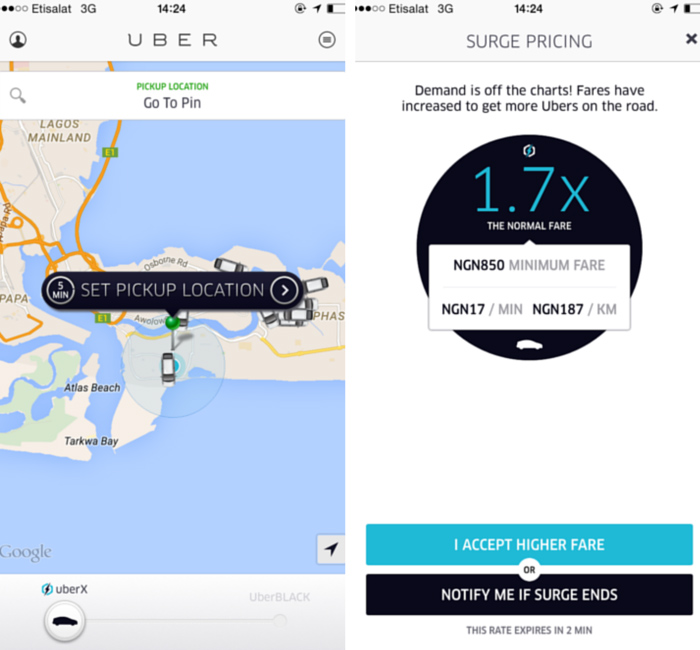Whoa, surge pricing in Lagos? Already? Yep. This is what it looks like.
Uber’s rationale for surge pricing:
With surge pricing, Uber rates increase to get more cars on the road and ensure reliability during the busiest times. When enough cars are on the road, prices go back down to normal levels. It’s important to know that you’ll always be notified in big, bold print if surge pricing is in effect. When rates are more than double, the surge confirmation screen also requires you to type in the specific surge multiplier to ensure you understand what rates to expect.
At the heart of surge pricing is an algorithm that automatically detects a constriction in car supply and dynamically raises prices to make the drivers come out. Once more cars are on the road, the price goes back down. Uber CEO Travis Kalanick has gone to the trouble of explaining it at great length. Sounds legit, but people still hate it.
In any event, while I was a bit taken aback at first, I remembered that there’s a bit of fuel scarcity going on at the moment, forcing motorists to buy from black market peddler at extortionate rates, so it’s reasonable that in those circumstances, it would take higher fares to get Uber Lagos drivers on the road.
This tells me another thing, that Uber Lagos’ handlers have achieved enough driver liquidity to justify using pricing controls. Previously when there were not that many Ubers on the road, it wouldn’t have made sense to ask people to pay a premium. But Uber has been in Lagos for seven months, and average ETAs around Lagos have gone down from 40 minutes to between 8 and 12 minutes.
Even so, 1.7x the normal fare felt pretty steep to me, and I wonder how people in Lagos, some of the most cost-conscious human beings in the world, are reacting. On the eve of 2015, a Cape Town dad flipped out when his inebriated son and first-time Uber user was charged almost 10x the usual fare.











